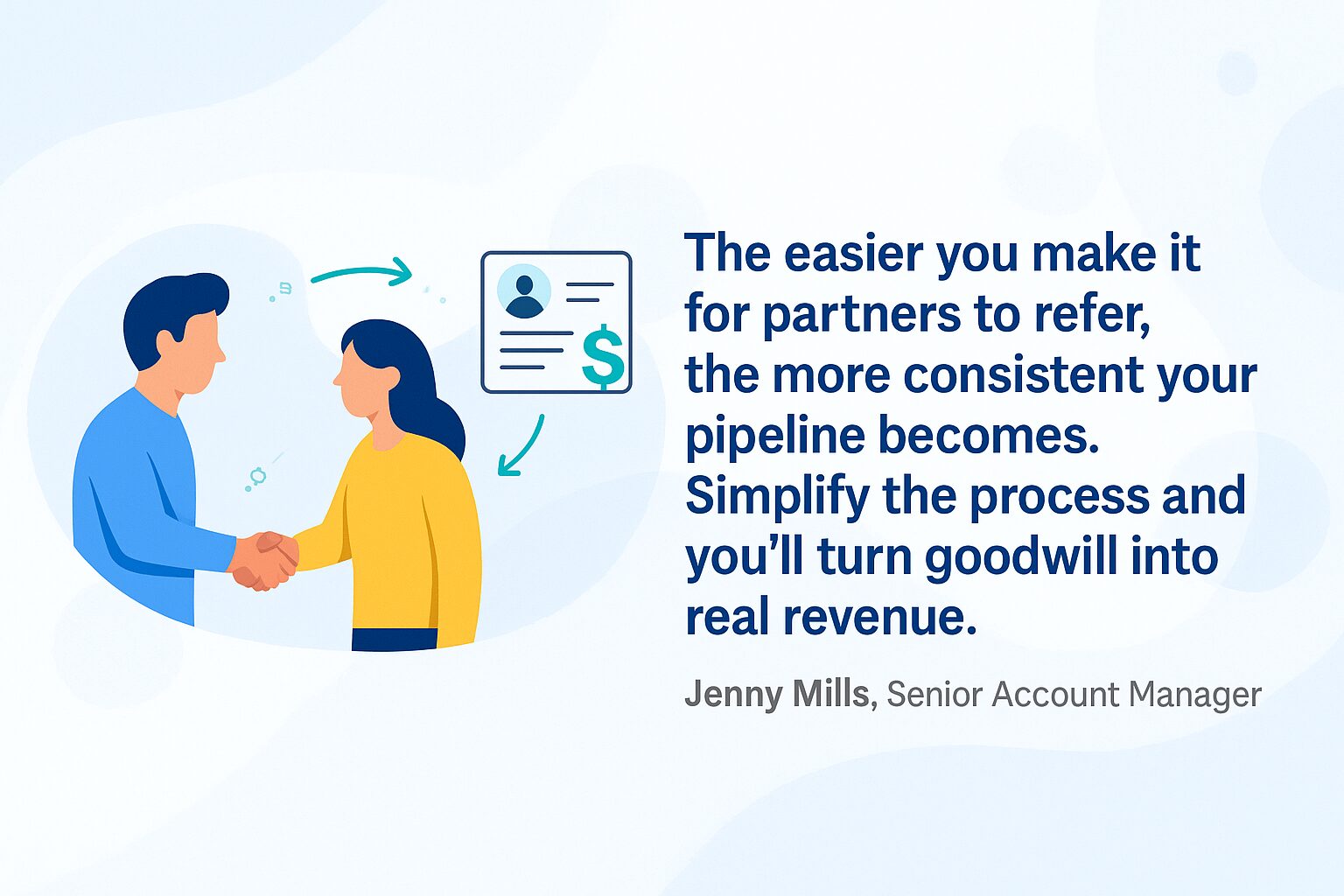TL;DR:
- Referrals should be treated as a structured revenue channel, not left to chance
- Strong partnerships rely on a clear value exchange and mutual benefit
- A simple, transparent referral process builds partner trust and consistency
- Recognition and communication fuel long-term collaboration
- Formalizing referral programs turns goodwill into measurable profit
Why Referrals Feel Like a Missed Opportunity
Many mid-sized B2B leaders know partnerships are powerful but feel frustrated by how inconsistent referral revenue can be. Deals trickle in unpredictably, partners forget to follow up, and opportunities slip through the cracks. The result is wasted potential and leadership pressure to drive growth in other, more costly ways.
The solution is to stop treating referrals as an afterthought and start managing them as a scalable, repeatable revenue stream. That’s where a referral revenue playbook comes in.

Step 1: Clarify the Value Exchange
Strong partnerships are built on reciprocity. Before asking for referrals, define exactly what partners gain:
- Revenue-sharing or commission structures
- Reciprocal introductions into your own network
- Access to co-marketing campaigns, insights, or events
- Stronger client relationships through value-added introductions
When both sides see tangible benefit, referrals shift from occasional favors to consistent business drivers.
Step 2: Create a Simple Referral Process
The easier it is to make an introduction, the more often it will happen. Leaders should:
- Provide a dedicated referral landing page or submission form
- Offer templated email copy that partners can copy-paste
- Track every referral in a shared system or CRM so partners can follow progress
A streamlined process makes referrals frictionless and shows you respect your partner’s time.
Step 3: Keep Partners in the Loop
Nothing undermines a referral program faster than silence. Treat partners as an extension of your team by:
- Confirming every lead received
- Sharing timely updates without oversharing sensitive details
- Closing the loop when a deal is won and highlighting the outcome
Communication builds confidence that their effort is making an impact.
Step 4: Recognize and Reward Contributions
Financial incentives matter, but recognition fuels loyalty. Consider adding:
- Public acknowledgment in newsletters, LinkedIn posts, or industry events
- Exclusive content, strategy sessions, or partner-only gatherings
- Personalized thank-you notes tied to specific wins
A simple thank-you, delivered consistently, goes further than most organizations realize.
Step 5: Measure Referral Revenue Like a Growth Channel
Treat referral revenue as seriously as you do paid or organic channels. Leaders should:
- Track KPIs: referred leads, deals closed, revenue attributed
- Review performance quarterly with key partners
- Optimize incentives, messaging, and processes based on data
When you track and improve referral programs like any other channel, you create sustainable revenue growth.
How 3 Media Web Can Help
Building scalable referral revenue requires more than good intentions. Your digital foundation must support credibility, visibility, and seamless partner enablement. That means:
- A professional web design and development strategy that inspires partner trust
- Reliable website support to ensure your referral program never stalls from technical hiccups
- Smart SEO and lead generation strategies to capture and nurture traffic from referred prospects
- Conversion rate optimization that ensures referrals move efficiently from introduction to closed deal
With the right systems in place, your referral channel becomes not just a source of goodwill but a measurable driver of revenue.
